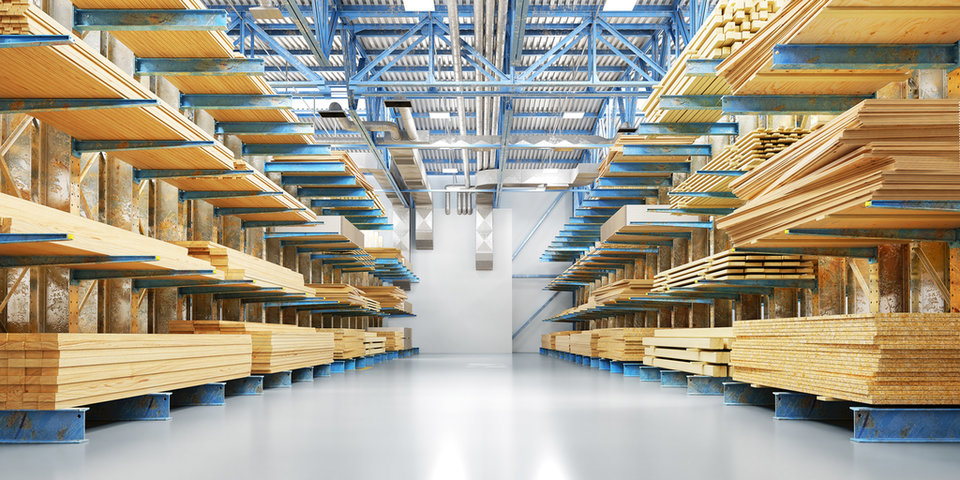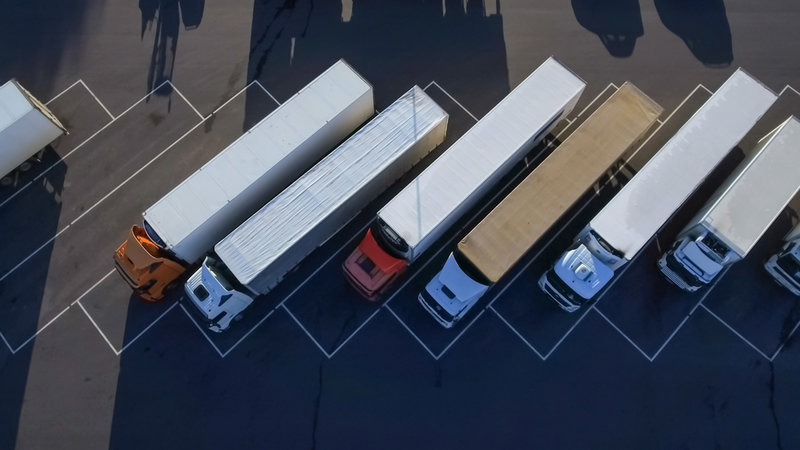Supply chain
What is impacting UK construction supply?
The ‘perfect storm’ of HS2 construction, Brexit and Covid-19 is causing a nationwide shortage of building materials in the UK. Dwindling supplies of timber, cement and steel have forced companies to delay construction, while soaring costs have threatened the survival of smaller outlets altogether. But how did the shortage get so out of control, and what can be done to rectify the situation? Alex Love finds out.

T
he UK Government’s mantra to ‘build back better’ from the pandemic may be severely restricted by a nationwide shortage of building materials. Multiple factors have collided, with a global pandemic and post-Brexit trade arrangements coming at once, contributing to a shortage of HGV drivers and construction workers.
And a surge in post-pandemic construction has led to intense demand for building materials, with a spike in home improvements. The UK is understood to be experiencing the fastest rise in construction activity for 24 years.
There are UK-wide shortages of plaster and plasterboard. While the large national infrastructure projects are reportedly drawing in materials such as cement and steel from other developments.
For the most part, material prices are rising and construction timelines are being pushed back. While many materials can still be sourced, builders have to deal with longer lead times and face international competition for supplies, notably timber.
“The UK’s small builders are facing a perfect storm. Pent-up demand caused by the pandemic has triggered record high enquiry levels. But with 98% of builders reporting the price of key materials like timber, concrete and steel is going up and up, and 50% struggling to hire key trades like bricklayers and carpenters, it’s becoming increasingly difficult to deliver projects to meet customers’ time and cost expectations,” says Brian Berry, chief executive Federation of Master Builders.
Bea Sennewald, director of projects at Article 25
Bea Sennewald, director of projects at Article 25
Material shortages
Global demand for timber is increasing as governments seek to encourage greater use of sustainable materials to meet environmental targets. In Q1 2020, timber and joinery sales were 30.5% higher than in Q1 2019, with construction projected to experience growth of 12.9% in 2021.
To keep up with demand, the UK is importing record quantities of softwood. Much of this comes from Scandinavia. From January to April this year, the UK’s softwood imports totalled 2,678,000m3. This amount was up 50.6% from 2020, and 17.2% higher than 2019.
“Timber’s role in the fight against climate change is becoming more widely acknowledged and greater use of wood products in construction is one of the recommendations made by the Climate Change Committee,” says David Hopkins, chief executive of the Timber Trade Federation.
“The combined impact of Brexit and Covid-19 has resulted in a huge increase in demand for wood products that outstripped short-term supplies, which was the case with construction products too.”
Yet the Confederation of Timber Industries (CTI) and Swedish Wood both believe the timber market will begin to settle down again as the pandemic starts to ease.
The government must work with industry to ensure building materials are getting to merchants right across the country.
Meanwhile, there are ongoing shortages of cement and steel. Large-scale infrastructure projects have been identified as a possible cause of where the materials have gone. For example, the HS2 rail project has been blamed by builders in the West Midlands for effectively diverting materials away from smaller constructors.
“The government must work with industry to ensure building materials are getting to merchants right across the country. That includes a fair allocation to small builders, to make sure that large infrastructure projects or volume housebuilders don’t source materials at local builders’ expense,” suggests Berry.
However, the UK Government has said cited global competition as the main cause of the materials shortage. Responding to a question in Parliament in June, Anne-Marie Trevelyan – the-then UK Minister for Business, Energy and Industrial Strategy – said: “At present, we do not have any information to suggest that demand from HS2 is having a material impact on supplies within the UK or on major projects in the construction, manufacturing and engineering sectors. However, the government recognises that this is a critical situation, and we are following events closely.”

Students at the Collège Amadou Hampaté Bâ in Niger, a school where Article 25 carried out an expansion project. Credit: Article 25 / Toby Pear
Transportation issues
Transportation issues are a significant factor in the shortage of building supplies. In the UK, a nationwide lack of HGV drivers is almost certainly contributing to the materials shortage, with some estimates putting the shortfall of drivers as high as 100,000.
Furthermore, the UK’s decision to leave the EU has led to an exodus of European lorry drivers. Alongside this, Covid-19 restrictions caused the postponement of an estimated 30,000 HGV driver tests as examiners were unable to share a cab with the drivers due to social distancing.
There have also been reports of delays at ports due to extra post-Brexit paperwork. Then there is the global shortage of shipping containers.
But even when there are no hold-ups at UK ports, delays are inevitable if there are not enough hauliers to transport materials. And industry leaders have urged the government to take immediate action to address the national shortage of both hauliers and skilled construction workers.
The government should listen to calls to put HGV drivers on to the shortage occupation list.
“The government should listen to calls to put HGV drivers on to the shortage occupation list to help with this distribution problem. It must also work with industry and colleges to encourage more people to choose a career in construction,” adds Berry. “The smallest firms train 71% of apprentices in the industry, but the numbers choosing to start an apprenticeship in construction have fallen again this year.”
In response, the UK Government said it has set out a series of measures aimed at alleviating the lack of hauliers.
“As driver shortages across Europe demonstrate, this is a widespread problem caused by a range of factors, including an ageing workforce. Most of the solutions are likely to be driven by industry, with progress already being made in testing and hiring, and a big push towards improving pay, working conditions and diversity,” says a UK Government spokesperson.
“We recently announced a significant package of measures, including plans to streamline the process for new drivers to gain their HGV licence, and increased capacity for HGV driving tests.”
Recently, the government announced it would enable 50,000 more HGV tests to be taken a year. But the government has refused to relax immigration rules for certain industries, emphasising the need for a domestic workforce that is not dependent on overseas workers. The government also points to its Plan for Jobs to support people to retrain and switch careers.
However, training for skilled jobs is not something that can be achieved overnight. And there are more than one million job vacancies across all UK sectors.
Booming business and planning ahead
Chalford Building Supplies has two bases in the South West, one is a couple of miles away from Stroud in Gloucestershire, and the other is in Calne near Chippenham in Wiltshire. Business has been booming for the company throughout the pandemic after it remained open at the height of lockdown when other merchants opted to close. The business is part of a buying group that operates across the South West, providing greater protection against market instability.
According to the company’s general manager Steve Robbins, Brexit may not be playing such a key role in driving up prices for materials.
"The Brexit factor? I don't think that's as big as perhaps it might be being played out. In haulage, maybe. Because there were so many international drivers in the country that might not be now. As far as tariffs go, some things are actually cheaper.
“When Brexit came through, we had a list of the various tariffs on fixings or silicones, or whatever was being imported from Europe to the Far East, whatever it might be. They weren't all reduced, obviously. But it wasn't as if we've flicked the switch, and all of a sudden there are these 5%-10% tariffs and the prices are going up. It's just been a case of the demand is so high and costs are increasing.
"The haulage part of it and container costs from China or India, wherever the stuff is coming from, is just driving those prices up. And whilst the demand is so high, you'd be foolish to say: 'Well, I'm not going to pay that'. Because someone else will. You've got to have product. We've invested heavily this year in product to make sure that we've got it so we can sell it.”
It's probably a blessing that they don't just expect to be able to get it the next day and just go and pick it up or get it delivered that quickly.
There is no question that smaller construction firms have been hit harder by the pandemic than their larger counterparts. However, the pandemic has forced the industry to change and now smaller building firms are planning jobs much further in advance instead of turning up at a merchant when materials are required. Forward-planning is often an effective way to withstand supply chain disruption.
“A lot of them are getting used to the habit of asking the question when a project starts: 'This is what the construction is, it's this kind of stone and there's this timber involved, or there's this roof tile, can I get it?' Because they know they're either going to have to go elsewhere or go back to the architect and perhaps change some of the materials,” adds Robbins.
“From an industry perspective, it's probably a blessing that they don't just expect to be able to get it the next day and just go and pick it up or get it delivered that quickly. That planning ahead is probably a benefit really for everybody.”
Main image: Concept image of Collège Amadou Hampaté Bâ, one of Article 25’s school projects. Credit (all images): Article 25